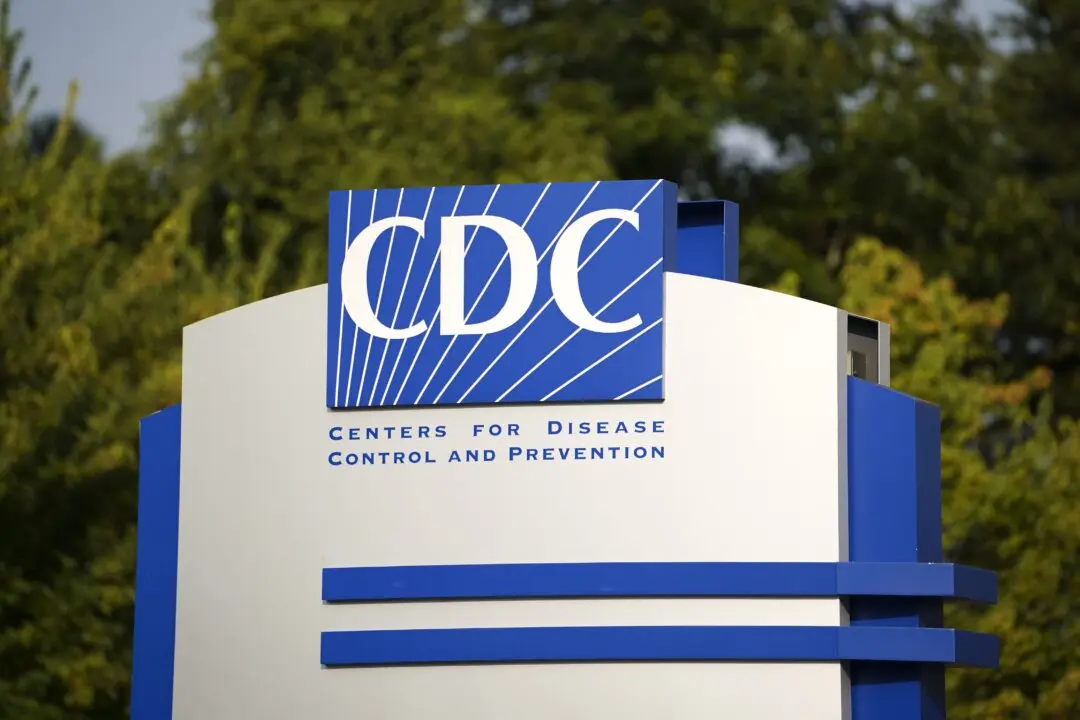The U.S. Centers for Disease Control and Prevention (CDC) never reviewed the raw data underpinning a study the agency claimed bolstered the position that naturally immune people should receive COVID-19 vaccines.
Catherine Bozio, a CDC official, and other authors said that unvaccinated adults with prior infection, or natural immunity, were more likely to be hospitalized with COVID-19 than fully vaccinated people with no prior infection.
“All eligible persons should be vaccinated against COVID-19 as soon as possible, including unvaccinated persons previously infected with SARS-CoV-2,” Ms. Bozio and her co-authors wrote at the time.
“Get vaccinated as soon as possible,” the CDC stated.
“The CDC repeatedly downplayed the role of natural immunity and used this salami slice of data to suggest that vaccinated immunity was more durable than natural immunity. Subsequent studies revealed they got it backwards,” Dr. Marty Makary, a professor at Johns Hopkins School of Medicine who was not involved with the study, told The Epoch Times via email. “Public health officials grabbed any study conclusions that fit their narrative, regardless of the quality of the data source.”
The CDC’s quasi-journal did not respond to emailed questions, including whether it’s normal for the journal not to review raw data underpinning studies it publishes.
Most Authors Do Not Review Data
Dr. Frederik Schaltz-Buchholzer, a researcher with the Bandim Health Project, said that generally not all co-authors listed on a paper verify the raw data underpinning the research.“In most cases, it would only be the first author and perhaps the last author or a co-author such as the second author,” Dr. Schaltz-Buchholzer, who was also not involved in the research, told The Epoch Times in an email.
Ms. Bozio was the first author of the paper. She did not return a query.
“A sound scientific practice is if e.g. the first author conducts the analyses, and one co-author then either goes through all analytic steps reproducing the results or, even better, have a statistician conduct the analyses completely independent of the first author, receiving only the raw dataset, resulting in the same findings,” Dr. Schaltz-Buchholzer said. “I do not know how it was done in this particular study, including how the data quality was vetted and verified.”
Dr. Dick Bijl, a physician-epidemiologist and former president of the International Society of Drug Bulletins, told The Epoch Times via email that most authors listed on papers do not view the raw data, nor do journals ask for the data.
The journals are not familiar with how to interpret the data and trust authors to appropriately handle the data and peer reviewers to identify issues, Dr. Bijl said.
More on Study
The paper analyzed data from 187 hospitals across nine states from January to September 2021, with authors including people who were treated for COVID-19 or a “COVID-19-like illness” such as pneumonia, and excluding people who were not tested before admission.Hundreds of thousands of hospitalizations for a COVID-19-like illness happened during the study period, but most patients were excluded under the inclusion criteria. That criteria also meant only people who were vaccinated or previously infected 90 to 179 days earlier were included, and that people who had not been tested at least one other time since Feb. 1, 2020, were excluded.
While 94,264 patients were hospitalized with COVID-19-like illness and were tested for COVID-19, just 7,348 had also been tested at least one other time.
Among that subset, 1,020 hospitalizations were among unvaccinated people with natural immunity, and 6,328 were among fully vaccinated people who had never been infected before being hospitalized.
For the testing just before hospitalization, 9 percent of the unvaccinated tested positive and 5 percent of the vaccinated tested positive.
When stratifying by time since previous infection or vaccination, the vaccinated were more likely to be hospitalized than the unvaccinated by day 150.
Internal Emails
In internal emails on the study, CDC officials appeared to ignore questions about the study methodology while focusing on how to promote the paper.One person noted that the CDC’s statement on getting vaccinated made it sound as if the data applied to the population at large, but noted that the paper only included hospitalized patients.
“My reading of the paper suggests the strongest conclusion the data supports is: ‘Among patients who were hospitalized with COVID-like symptoms, unvaccinated patients with previous infection were 5x more like to test positive for COVID than vaccinated patients,” the person told Ms. Bozio. “This is still an interesting finding, but it is not as broad as the [CDC] graphic implies.”
Another person pointed out that, numerically, many more vaccinated people were hospitalized with COVID-like illness.







